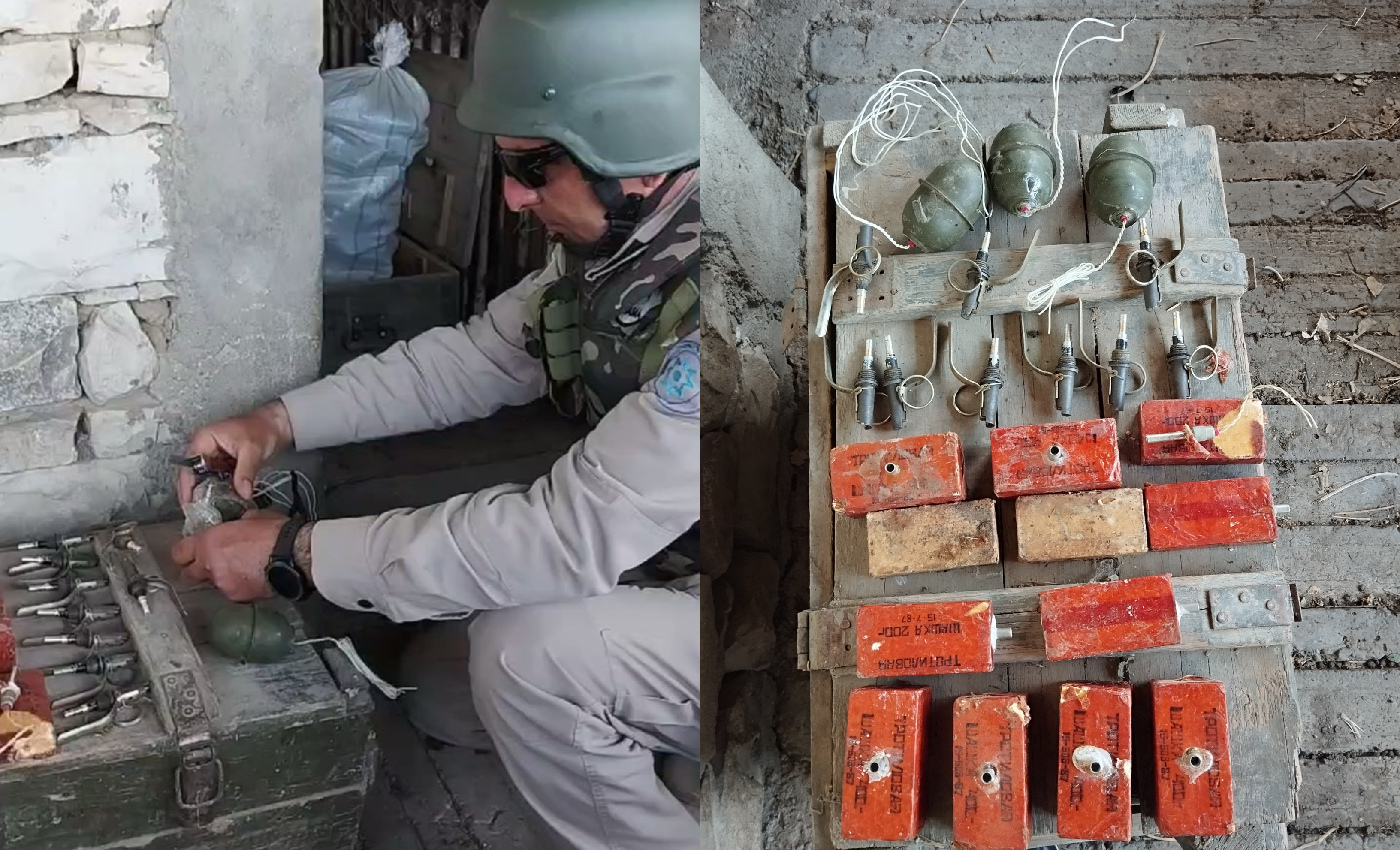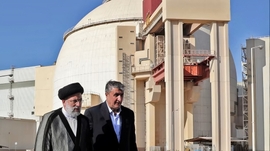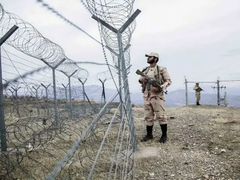The Mine Action Agency of Azerbaijan (ANAMA) reported on Thursday the discovery of a significant amount of explosives in the Khojavand district of the country’s Karabakh (Garabagh) region.
According to ANAMA’s press service, the cache of explosives was found in a farm-type building connected to a residential structure near a winery in Khojavand village.
During operations conducted by ANAMA personnel, they identified several improvised explosive devices, explosive materials, electric and non-electric detonators intended for powerful explosions, as well as improvised explosive devices using Armenian-made D1 brand hand grenades.
The discovered explosive materials, which had been abandoned by the Armenian illegal armed groups previously stationed in Khojavand, were neutralized by ANAMA staff, ensuring the area’s safety.
These findings in Khojavand closely follow another significant discovery announced by the Ministry of Internal Affairs of Azerbaijan. On Tuesday, officials reported the seizure of a variety of weapons and ammunition in Khankendi city, including 7 machine guns, a shotgun, a grenade launcher, 7 hand grenades, 6 fuses for hand grenades, 8 shells, and 740 rounds of various calibers.
The uncovering of arms caches in the Karabakh region has continued since the Armenian army formations and separatist forces were expelled in September 2023. One of the largest arsenals was unearthed in Khankendi in February, containing various weapons and equipment.
In April, the Defense Ministry of Azerbaijan reported the discovery of surveillance equipment installed by the Armenian Armed Forces across different locations in the Karabakh region. Over 200 optoelectronic and observation cameras were strategically positioned to monitor Azerbaijani military and civilian movements. These devices, camouflaged and dispersed along a 480-kilometer former contact line, were successfully neutralized by the Azerbaijani military, further securing the region.
The one-day local anti-terror operation, initiated on September 19, 2023, targeted illegal Armenian armed formations and their military infrastructure in response to their escalating attacks on Azerbaijani positions. This decision came after fatalities caused by mine incidents in the Khojavand district, resulting in casualties among Azerbaijani law enforcement and civilian workers. Azerbaijani troops stationed in the Aghdam district also suffered injuries due to the presence of Armenian armed formations in Azerbaijani territories, which were temporarily monitored by Russian peacekeeping forces.
Throughout the operation, the Azerbaijani military successfully disabled artillery systems, radio-electronic warfare equipment, military vehicles, ammunition depots, and strongholds of Armenian armed formations in the Karabakh region. Social media footage displayed the destruction of Armenian military assets, including a Russian-made “TOR” multiple-launch rocket system and a “Mortira” electronic warfare system, in Khankendi city.
Before the anti-terror operation, the Azerbaijani Foreign Ministry revealed Armenia’s extensive military presence in the Karabakh region since the 2020 war, including over 10,000 armed forces and various equipment.
Following a trilateral agreement mediated by Russia in 2020, the Armenian military was obligated to withdraw from the Karabakh region of Azerbaijan. This agreement was signed after Azerbaijan’s victory in the 44-day war with Armenia, where Azerbaijan emerged as the clear victor. The agreement demanded the immediate withdrawal of the Armenian military from the region to facilitate peacebuilding efforts. However, Armenian armed forces remained within Azerbaijani borders, disregarding repeated demands for their withdrawal. It was not until the local anti-terror operation in 2023 that the situation began to improve, with efforts intensifying to enforce the terms of the 2020 agreement and ensure regional security.







 The Azerbaijani government has rejected the recent claims made by French Interior Minister Gérard Darmanin, who accused Baku of fostering separatis...
The Azerbaijani government has rejected the recent claims made by French Interior Minister Gérard Darmanin, who accused Baku of fostering separatis...
 Iran is moving to fortify its eastern border with Afghanistan in a bid to fight illegal migration and drug trafficking, along with enhancing security.
Iran is moving to fortify its eastern border with Afghanistan in a bid to fight illegal migration and drug trafficking, along with enhancing security.
 The Iranian and Cuban transport ministers have discussed expanding maritime and air transportation cooperation.
The Iranian and Cuban transport ministers have discussed expanding maritime and air transportation cooperation.
 U.S. Secretary of State Antony Blinken reiterated Washington’s unwavering support for the ongoing peace process between Azerbaijan and Armenia in a...
U.S. Secretary of State Antony Blinken reiterated Washington’s unwavering support for the ongoing peace process between Azerbaijan and Armenia in a...



